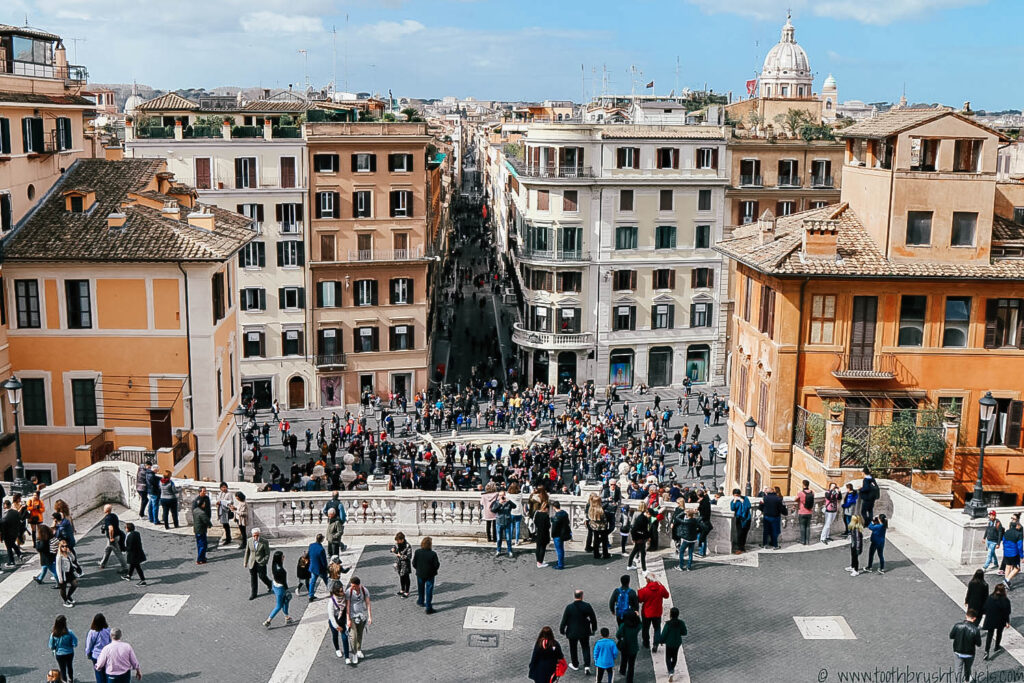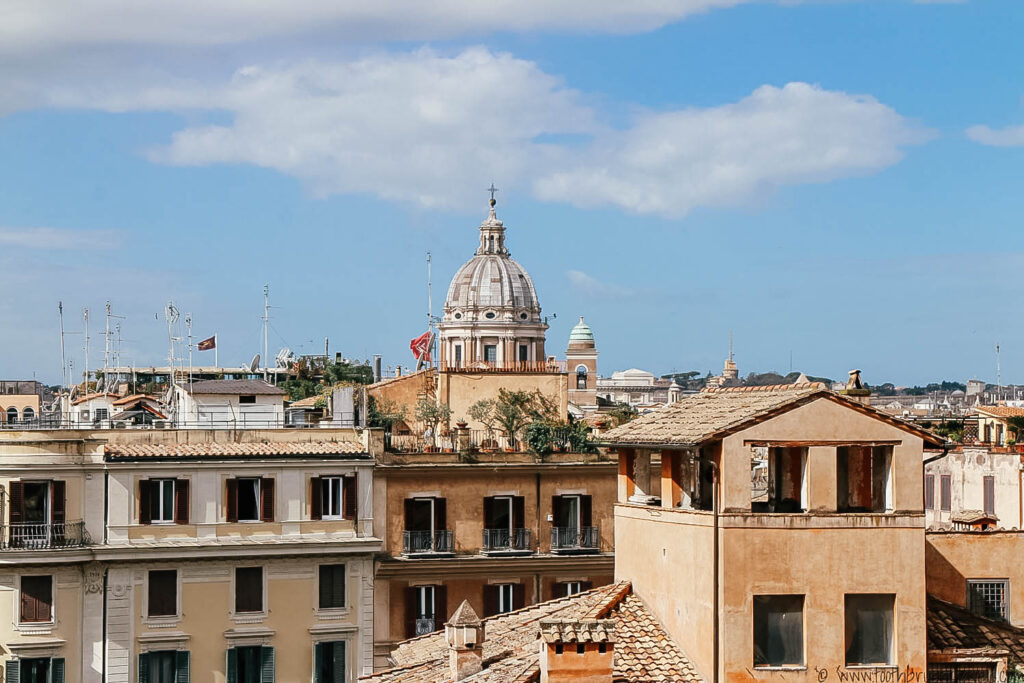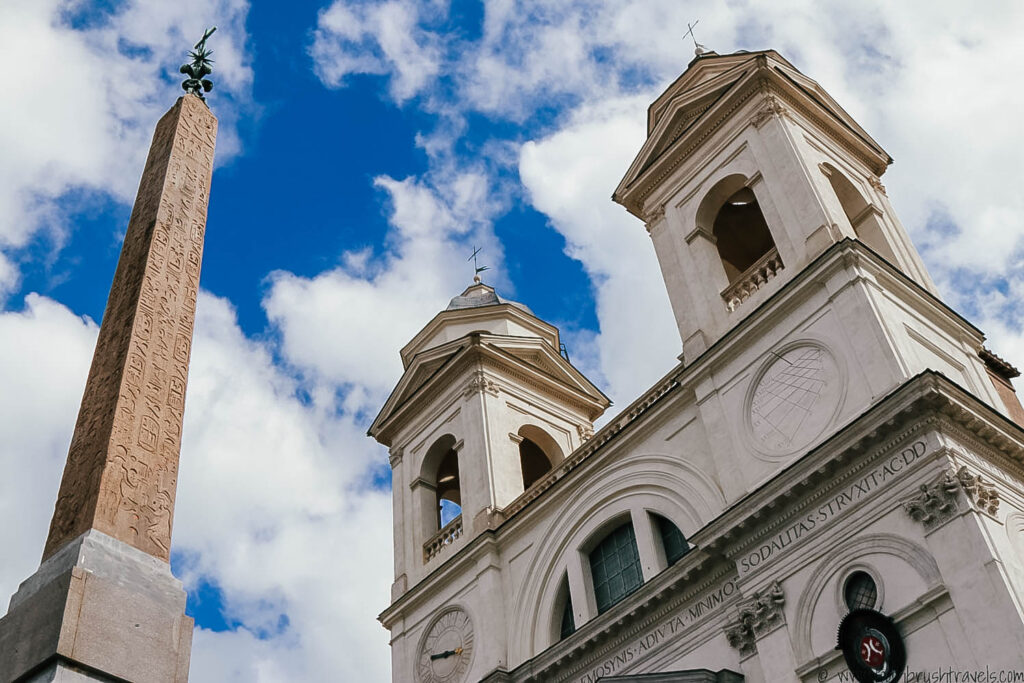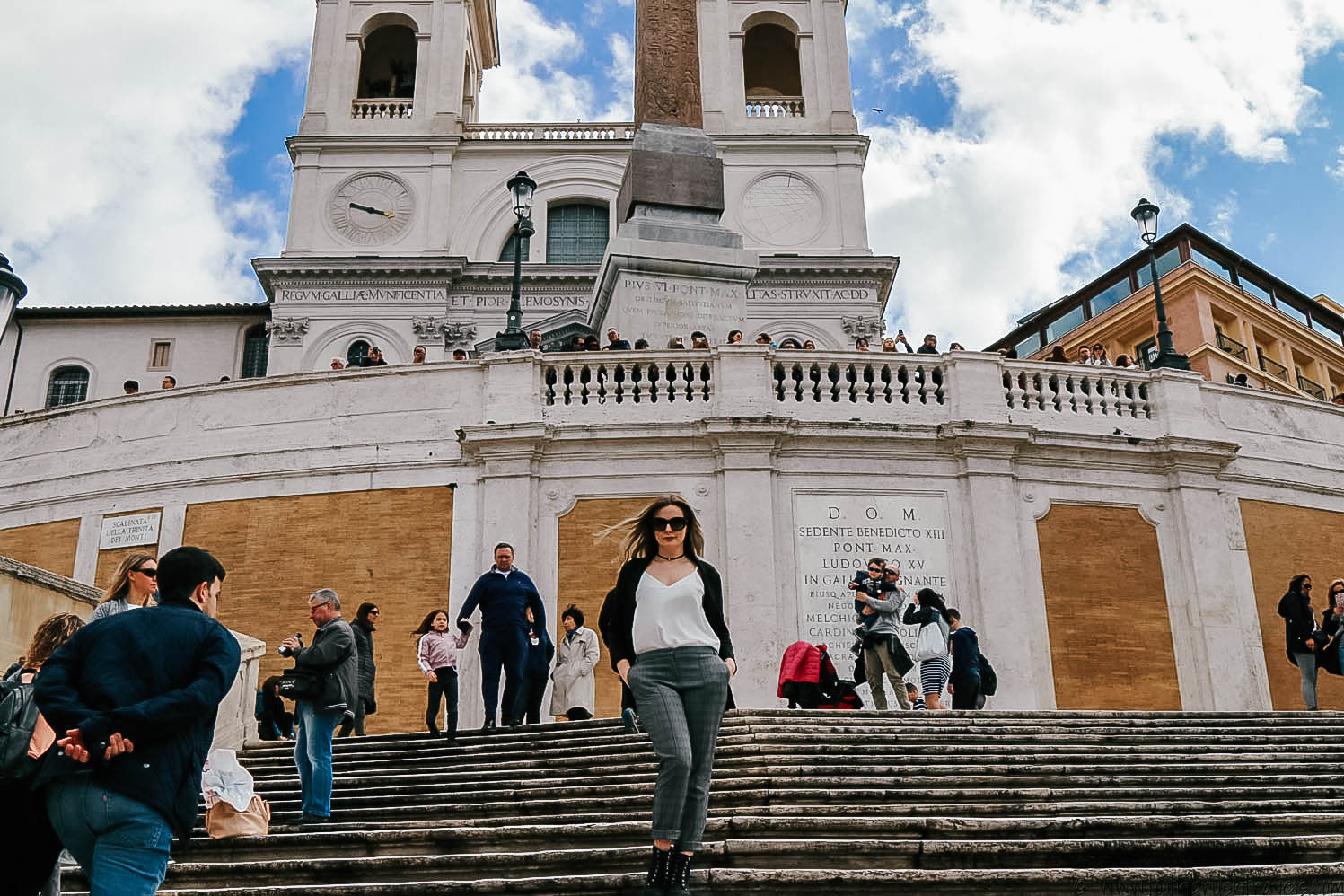Sitting on the Spanish steps in Rome, I couldn’t help but think about how steps can be such a key component to a story. They’re such an unassuming object, yet stairs can hold such significant meaning.
For example, when I was younger I would tip-toe down the stairs every December and perch just a few stairs up, listening to my mum and her friends speak, in the anticipation of her slipping up and saying where she hid the Christmas presents.
Blair would sit on them with her minions in the fictional TV show Gossip Girl, and let’s face it, there are a million movies out there from Rocky to, well, any film where a Princess makes a grand reveal, that love to utilise a good set of stairs. But the Spanish Steps in Rome? They have a significance all of their own.

The Spanish Steps, known in Italian as La Scalinata di Trinita dei Monti, were built back in the 1720s as a way to connect the Trinità dei Monti church to the Spanish square below. The Spanish Steps were built by, little known at the time, architect Francesco de Sanctis and were financed by French diplomat Étienne Gueffier, resulting in 138 steps which would create one of Rome’s most notorious people watching spots.

The Spanish Steps became such a popular spot for people watching, not just due to the wide, shallow nature of the steps (which is perfect for perching!), but because the steps were known for attracting a rather good-looking crowd. Artists, photographers and models would all meet on the stairs—a trend which continued on in popularity when Audrey Hepburn and Gregory Peck used the Spanish Steps as a backdrop in the 1953 film Roman Holiday.
The crowds still gather there today, spilling down from the Spanish Steps onto the square below, where you can find Fontana della Barcaccia – an early baroque fountain.

The Piazza De Spagna area, where the steps are located, is pretty incredible if you like to indulge in a little luxury shopping. But the thing that surprised me the most, is that the luxury powerhouses that surround the area regularly give back to Rome. The founder of luxury shoe brand Tod’s, Diego Della Valle, sponsored the restoration of the Colosseum. Karl Lagerfeld, the Creative Director at Fendi, funded a restoration of the Trevi Fountain. And the Spanish Steps had their own private saviour when luxury jewellery company BVLGARI paid £1.3 million towards restoring the steps.

But along with this dedication and history, sits an abundance of life. Because the Spanish steps were full. Full of people having photoshoots, recreating iconic moments from film or creating their own unique spin. Full of animated conversations from people of all ages. Full of people eating gelato. And this made my heart feel full. Not just because after visiting the Trevi Fountain, I had grabbed some strawberry tiramisu to eat whilst I sat people watching, but because I loved how something as simple as stairs had become such an iconic resting place.
As I perched on the steps watching the world go by and pondering where to go next, a father and daughter began dancing a pre-rehearsed routine. There was at least a 3-foot height difference between them but they span, they jumped, they clapped and they giggled, and as I sat there watching them I realised that travel is an experience that constantly surprises you. Because when you think back on fond travel memories, you don’t tend to think of steps.
But with the time I spent on the Spanish steps?
That’s exactly what I’m left with.
You can find the Spanish Steps at Piazza di Spagna, 00187 Roma RM, Italy—and there are plenty of fun things to do nearby. Including a Fettucine and Tiramisu Class!
